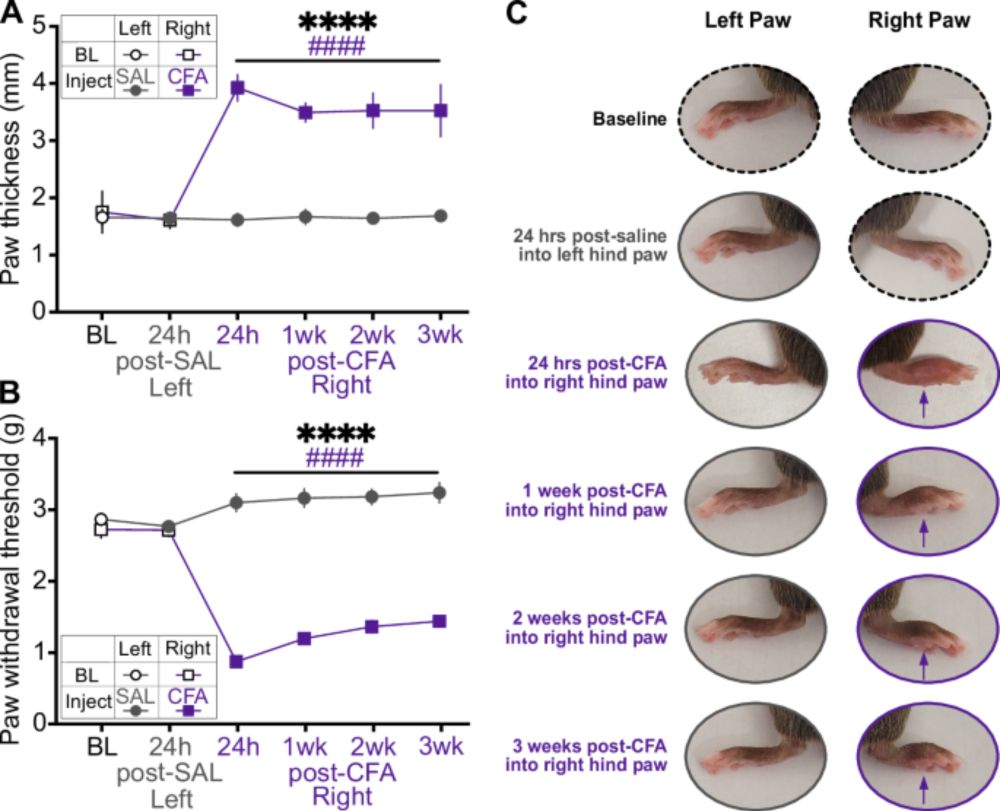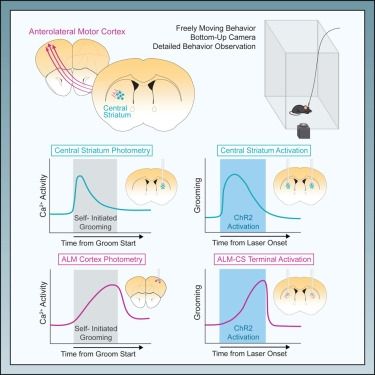amygdala neurons track reward-seeking actions, and punishment risk dramatically alters this function. lots of other (BLA-accumbens!) data included.

amygdala neurons track reward-seeking actions, and punishment risk dramatically alters this function. lots of other (BLA-accumbens!) data included.
She explored how MDMA & methamphetamine impact cortisol, endocannabinoids, & BDNF levels in healthy humans and how this relates to the subjective drug experience 💊👇

She explored how MDMA & methamphetamine impact cortisol, endocannabinoids, & BDNF levels in healthy humans and how this relates to the subjective drug experience 💊👇
www.biorxiv.org/content/10.1...
www.biorxiv.org/content/10.1...
www.biologicalpsychiatryjournal.com/article/S000...
www.biologicalpsychiatryjournal.com/article/S000...
link.springer.com/article/10.1...

link.springer.com/article/10.1...
www.nature.com/articles/s41...

Sachin Patel, @mayoonthebrain.bsky.social & team now show low levels of the endocannabinoid 2-AG is associated with increased generalization of fear in mice and humans: buff.ly/Sw00Fs0

Sachin Patel, @mayoonthebrain.bsky.social & team now show low levels of the endocannabinoid 2-AG is associated with increased generalization of fear in mice and humans: buff.ly/Sw00Fs0
Or, honestly, where we asked “what if we just flash a checkerboard at trauma survivors?” 1/🧵
Traumatic stress alters neural reactivity to visual stimulation
www.nature.com/articles/s44...

Or, honestly, where we asked “what if we just flash a checkerboard at trauma survivors?” 1/🧵
A heroic effort w/ @cannabrain.bsky.social @connorhaggarty.bsky.social @ryanntansey.bsky.social & many more 🧵⬇️

A heroic effort w/ @cannabrain.bsky.social @connorhaggarty.bsky.social @ryanntansey.bsky.social & many more 🧵⬇️
Developmentally distinct architecture in top-down pathways controlling threat avoidance
doi.org/10.1038/s415...

Developmentally distinct architecture in top-down pathways controlling threat avoidance
doi.org/10.1038/s415...
Cheers to the team, thanks to our precious collaborators and support from @braincanada.bsky.social #CIHR @fondsrechercheqc.bsky.social #newPI
www.nature.com/articles/s41...

Cheers to the team, thanks to our precious collaborators and support from @braincanada.bsky.social #CIHR @fondsrechercheqc.bsky.social #newPI
www.nature.com/articles/s41...
Make sure to click through figure supplements as there is so much good stuff in there - sex differences, etc.
elifesciences.org/articles/99988

Make sure to click through figure supplements as there is so much good stuff in there - sex differences, etc.
elifesciences.org/articles/99988
Ft. @ahmarilab.bsky.social @piantadosisean.bsky.social
If you're into mouse behavior, optogenetics, and calcium imaging, here's this 🐀🔦🔬
www.cell.com/cell-reports...

Ft. @ahmarilab.bsky.social @piantadosisean.bsky.social
If you're into mouse behavior, optogenetics, and calcium imaging, here's this 🐀🔦🔬
www.cell.com/cell-reports...
1st paper: the impact of cannabis vapor on neuroendocrine responses to stress
www.sciencedirect.com/science/arti...
2nd paper: the impact of cannabis vapor on fear learning
link.springer.com/article/10.1...
1st paper: the impact of cannabis vapor on neuroendocrine responses to stress
www.sciencedirect.com/science/arti...
2nd paper: the impact of cannabis vapor on fear learning
link.springer.com/article/10.1...
Sam Baglot was an amazing PhD student and while I know she will do great things with Ziva Cooper/Cathy Cahill at UCLA for her postdoc, I am sad to see her go.




Sam Baglot was an amazing PhD student and while I know she will do great things with Ziva Cooper/Cathy Cahill at UCLA for her postdoc, I am sad to see her go.

lab, which represents the culmination of my postdoctoral work, and serves as the platform for my future research programs investigating the in vivo role of the endocannabinoid signaling system!
www.biorxiv.org/content/10.1...

lab, which represents the culmination of my postdoctoral work, and serves as the platform for my future research programs investigating the in vivo role of the endocannabinoid signaling system!
www.biorxiv.org/content/10.1...
Link to order: store.youcan.info

Link to order: store.youcan.info

We examined the distribution of CRHR1 expressing neurons within the basolateral amygdala, their integration in circuits emanating to NAc and CeA and their reactivity to stress. sciencedirect.com/science/arti...

We examined the distribution of CRHR1 expressing neurons within the basolateral amygdala, their integration in circuits emanating to NAc and CeA and their reactivity to stress. sciencedirect.com/science/arti...
Colossal work by the team and driven home by @mathiasgua.bsky.social
Quick 🧵 of what's new -
www.biorxiv.org/content/10.1...

Colossal work by the team and driven home by @mathiasgua.bsky.social
Quick 🧵 of what's new -
www.biorxiv.org/content/10.1...

